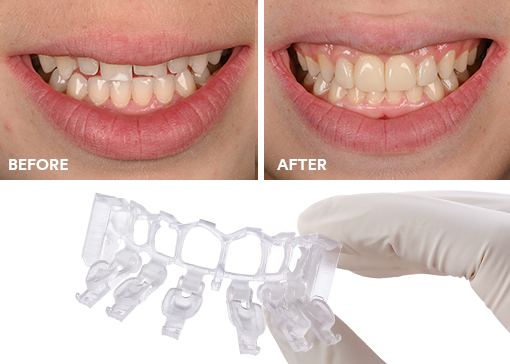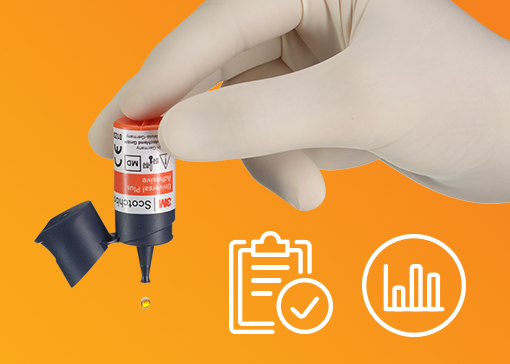Contouring and Polishing Anterior Composite Restorations created with the 3M™ Filtek™ Matrix
Achieving the correct shape is vital to a natural-looking anterior composite restoration. Learn how the 3M™ Filtek™ Matrix, paired with…

The idea that bulk fill composites save time has been around for years–and now there are the stats to prove it. See how these time savings are the real deal.
We all know that efficiency is key. Shortening the amount of time it takes to complete a task leads to increased productivity, which is always one of the main outcomes that we are striving for. In dentistry, our days are spent treating patients as efficiently as possible while at the same maintaining quality. But how do we shorten procedure times while maintaining quality?
Whether implementing new techniques, equipment, products, or a combination of all three, updating the methods, products and tools we use to increase productivity is a vital part of our job. Not only does reducing procedure times increase production, it also saves time for your patients, which may improve their overall satisfaction. This is rarely taught in dental school.
The next step is to determine how best to go about increasing efficiency. There are a variety of products specifically designed to simplify procedures, one example being bulk fill composites.
As product developers set out to design materials that will reduce the number of increments a dentist is required to place and light cure in order to complete a composite restoration, the goal is to provide a product that shortens procedure times while still delivering a durable, and well-cured, restoration. The solution was to create an entirely new category of direct restorative materials now known as bulk fill composites that can be light cured in 4 or 5 mm increments.
While bulk fill composites have been on the market for several years, the question has lingered: do bulk fill composites really save you time? The good news is that we now have proof, and the resounding answer is yes.
So, first things first, which studies are available to confirm the theory surrounding time savings associated with bulk fill composites? There have been a variety of studies conducted on this topic; however, we shall focus on two in particular:
Both studies examined the amount of time that can be saved when using bulk fill composites. Although the studies were performed separately and in different manners, both concluded that using bulk filling followed by bulk curing the composite materials resulted in overall time savings.
To start, let’s break down the first study listed, Clinical time and postoperative sensitivity after use of bulk fill (syringe and capsule) vs. incremental filling composites: a randomized clinical trial. One thing that sets this study apart is that it was the first to evaluate the entire clinical procedure and not just the placement of the restoration. The corresponding author, Dr. Marcos Barceleiro, explains:
“There are some studies that have evaluated the clinical time that you need to make a restoration with bulk fill composites and comparing it with traditional composites. But in those studies, all of the cavities were similar in height and standardized. … Those studies also didn’t include the time to finish, polish or make occlusal adjustments. Our study was the first clinical study that evaluated entire clinical time, all using bulk fill composites.”
A unique factor of this study is that this was an in vivo study, meaning the restorations were placed clinically. The methodology for investigating the bulk fill time savings was to perform a randomized, double-blind (patient and evaluator) clinical trial on a total of 53 cavities per group.
The restorations were performed using the bulk-filling technique with both syringes and capsules, as well as both with and without selective enamel-etching. The results from each of these groups were compared to the method using traditional composites with the incremental technique (control group).
After comparing the two restoration methods, the study confirms the theory that using bulk fill composites saves time. “From a clinical point of view, our study shows that you spend 50-60% less time to perform the restoration when using bulk fills,” said Dr. Barceleiro.
Along with comparing the procedure time for incremental placement vs. bulk fill placement, this study also evaluated the postoperative sensitivity for each restoration. The results confirmed that the risk of postoperative sensitivity was the same regardless of which type of composite material was used and which type of procedure was performed.
“The study results show that you can safely use bulk fill composites. Your patient will not have a higher risk of postoperative sensitivity because you are making a faster restoration,” explained Dr. Barceleiro.
So not only can the procedure be performed more efficiently, but the risk of sensitivity does not increase. This means the chance of patients returning with pain and requiring additional work is no higher than if traditional composite was placed incrementally.
In conclusion, this study found that the average time needed to place incrementally filled posterior Class I or Class II composites (using selective enamel etching) was 28 minutes compared to 11 minutes when using a bulk fill material, in this case, 3M™ Filtek™ One Bulk Fill Restorative, which translates into to a 17-minute per restoration time savings. Importantly, the use of bulk fill composites did not increase the risk or intensity of postoperative sensitivity compared to incrementally layered posterior composites.
The second study was conducted by Dr. Price from Dalhousie University in Canada and had similar findings to Dr. Barceleiro’s study. The objective of Dr. Price’s study was to compare composite adaptation and placement times using four different techniques.
One key difference in Dr. Price’s study is that it was performed in vitro. To conduct the study, 11 dentists filled four Class II MOD molars (5 mm deep proximal boxes) in heated typodont teeth using the following methods and materials:
The in vitro study concluded that the posterior bulk filling technique resulted in a significant time savings. On average, using an incremental filling and light-curing each increment took 15 minutes while bulk filling and then light-curing was completed in just 6 minutes (2.5 times faster).
After completion of the study, it was concluded that bulk filling with warmed composite followed by bulk curing provided the best adaptation of composite to the cavity walls and the fewest ‘knit’ lines between increments. However, bulk filling does not mean filling the cavity without care and attention.
When the composite is more than 4 to 5 mm thick (or greater than the manufacturer’s maximum recommended depth of cure), each 4 to 5 mm thick increment should be light cured separately while ensuring that the tip of the guide completely covers the occlusal surface area of the composite.
In essence, spending less time on each procedure means that productivity is increased, overall profitability is boosted, and patients benefit from spending less time in the chair.
To conclude, recent studies by Dr. Barceleiro and Dr. Price not only confirm the assumption that bulk fill composites save time, but also that they can provide excellent adaptation to the cavity and low rates of post-operative sensitivity. From a clinician’s perspective, bulk fill composites have the potential to improve productivity and, correspondingly, the lives of their patients.
Sources:
Disclaimer:
*The study, Clinical time and postoperative sensitivity after use of bulk-fill (syringe and capsule) vs. incremental filling composites: a randomized clinical trial, was not funded by 3M. It was supported by the National Council for Scientific and Technological Development (CNPg 177759) and Coordination for the Improvement of Higher Level Personnel (CAPES) in Brazil.
Acknowledgement:
A special thanks to Dr. Richard Price and Dr. Marcos Barceleiro for their contributions, including their respective studies and sharing the findings for inclusion in this article.

Achieving the correct shape is vital to a natural-looking anterior composite restoration. Learn how the 3M™ Filtek™ Matrix, paired with…

Direct composite restorative procedures can be challenging, particularly when it comes to esthetic cases. Discover how new techniques and tools…

When choosing a new universal adhesive for your office, you have a lot to consider – including clinical history. Take…